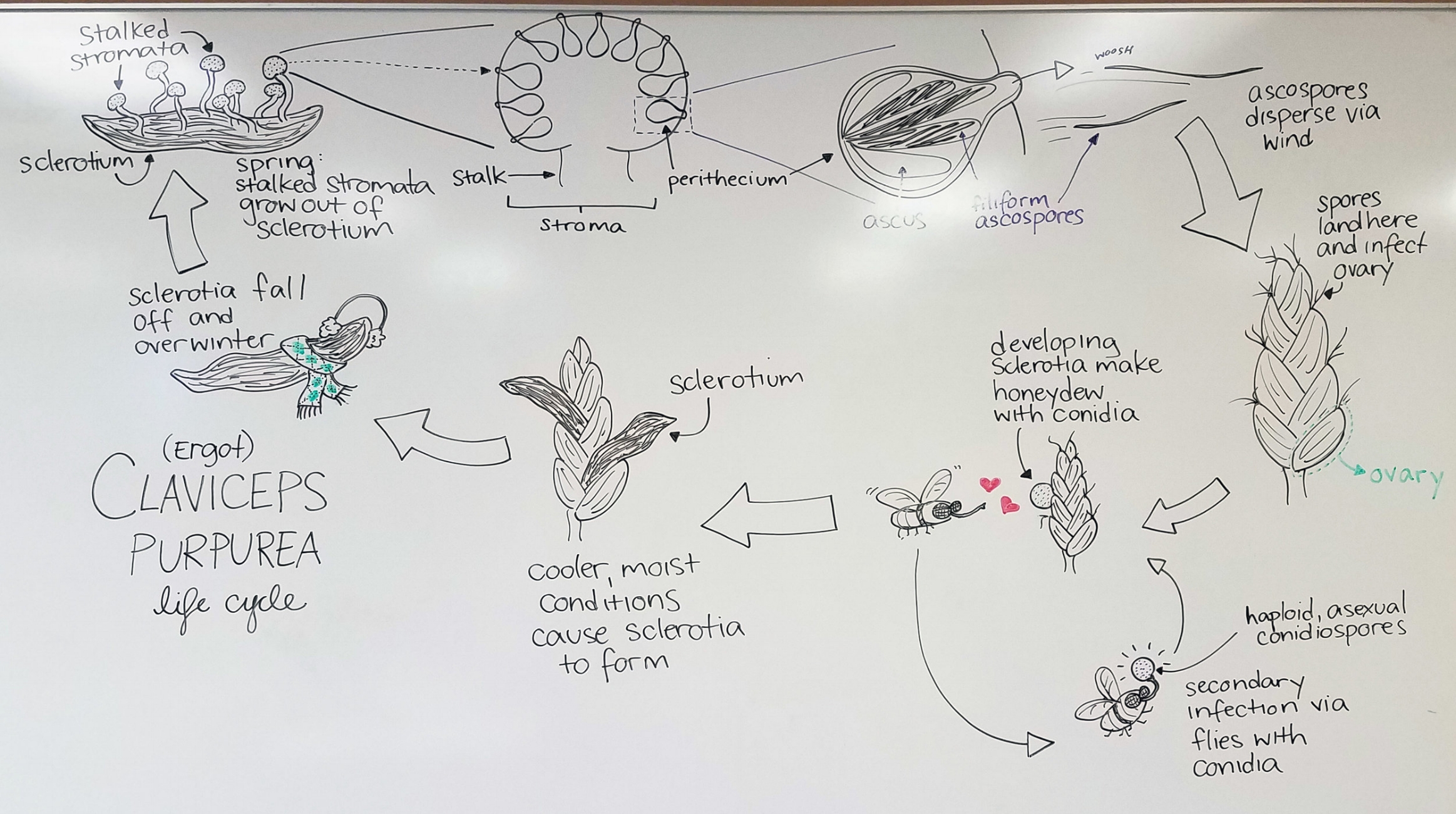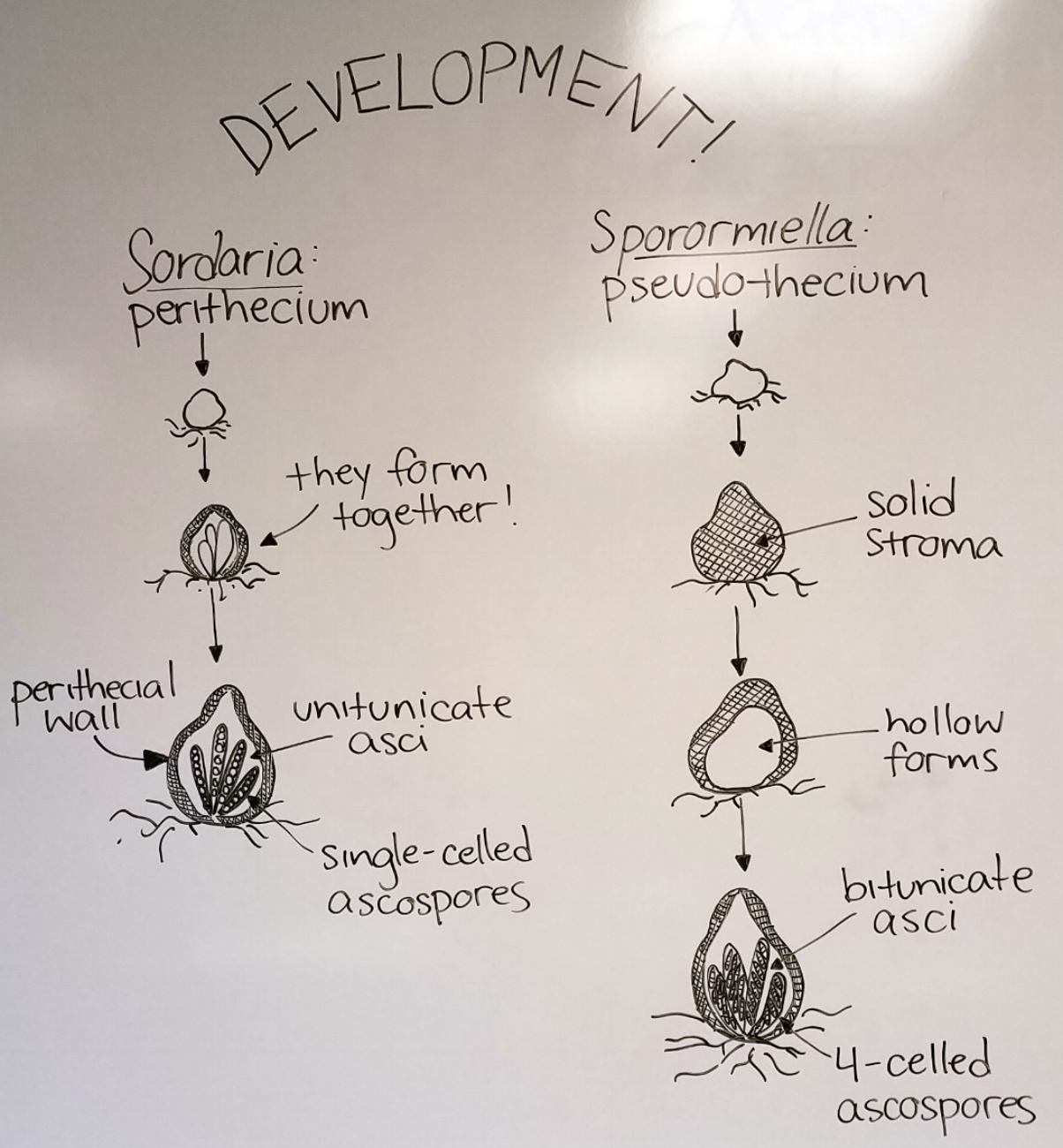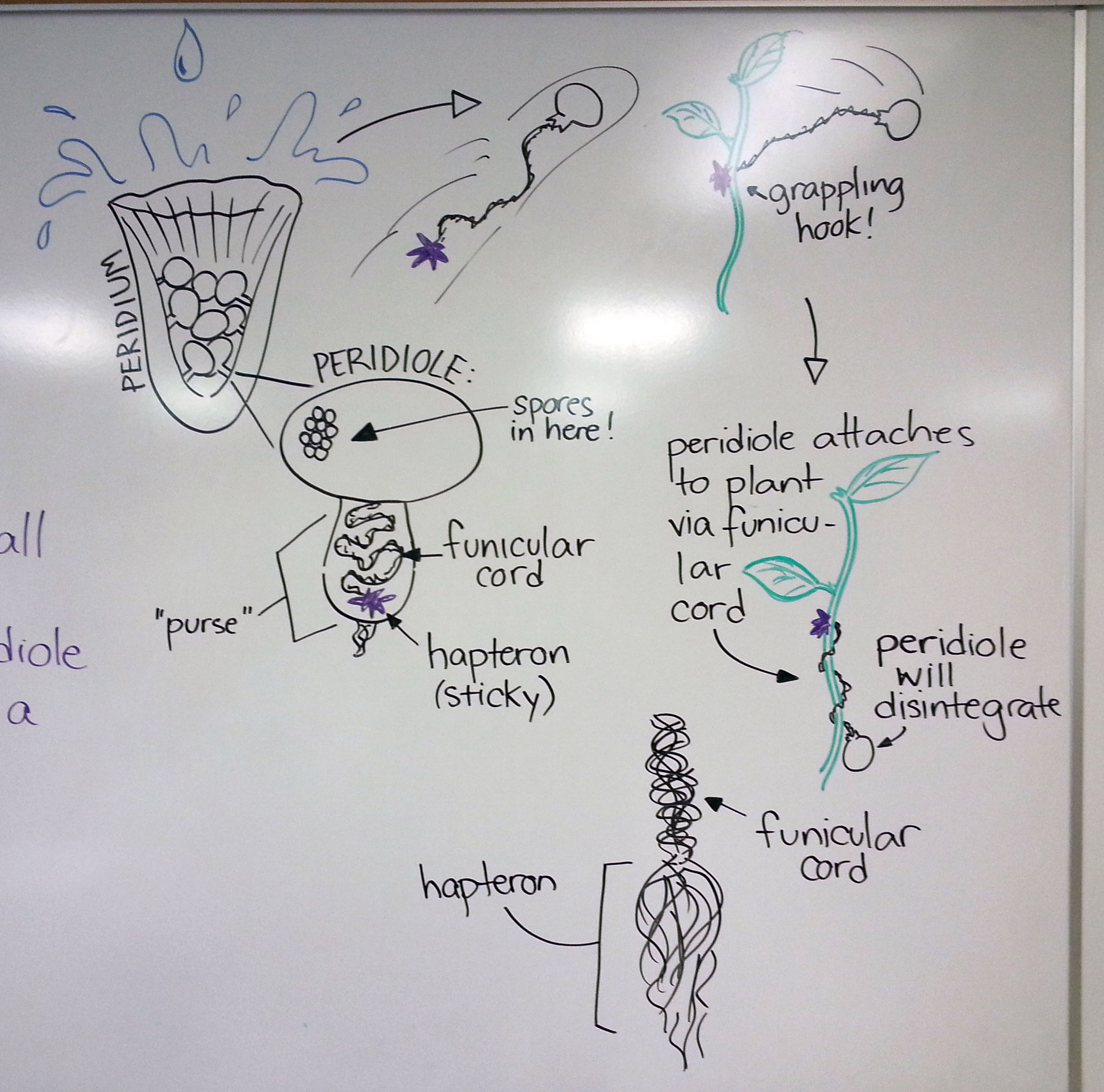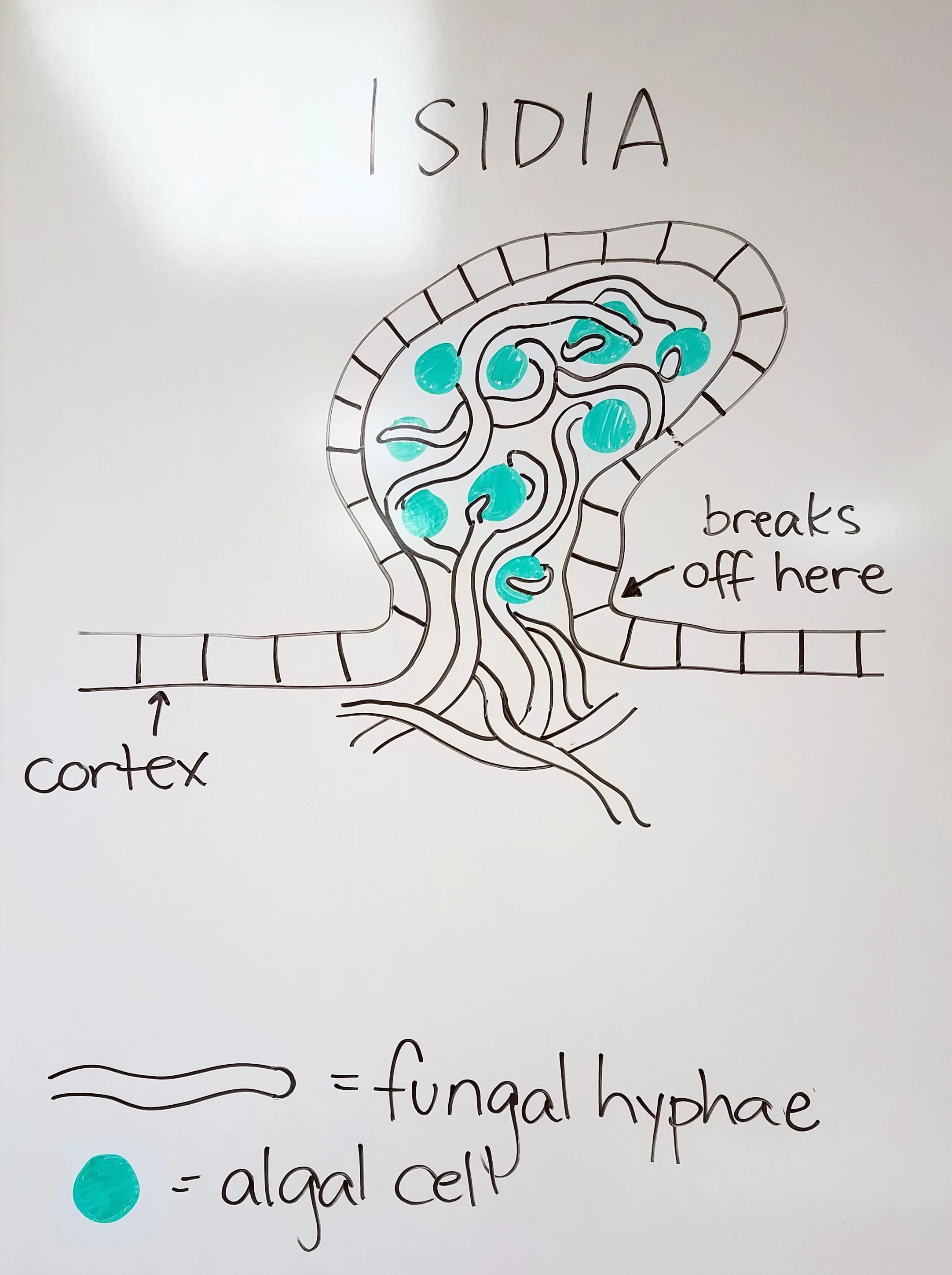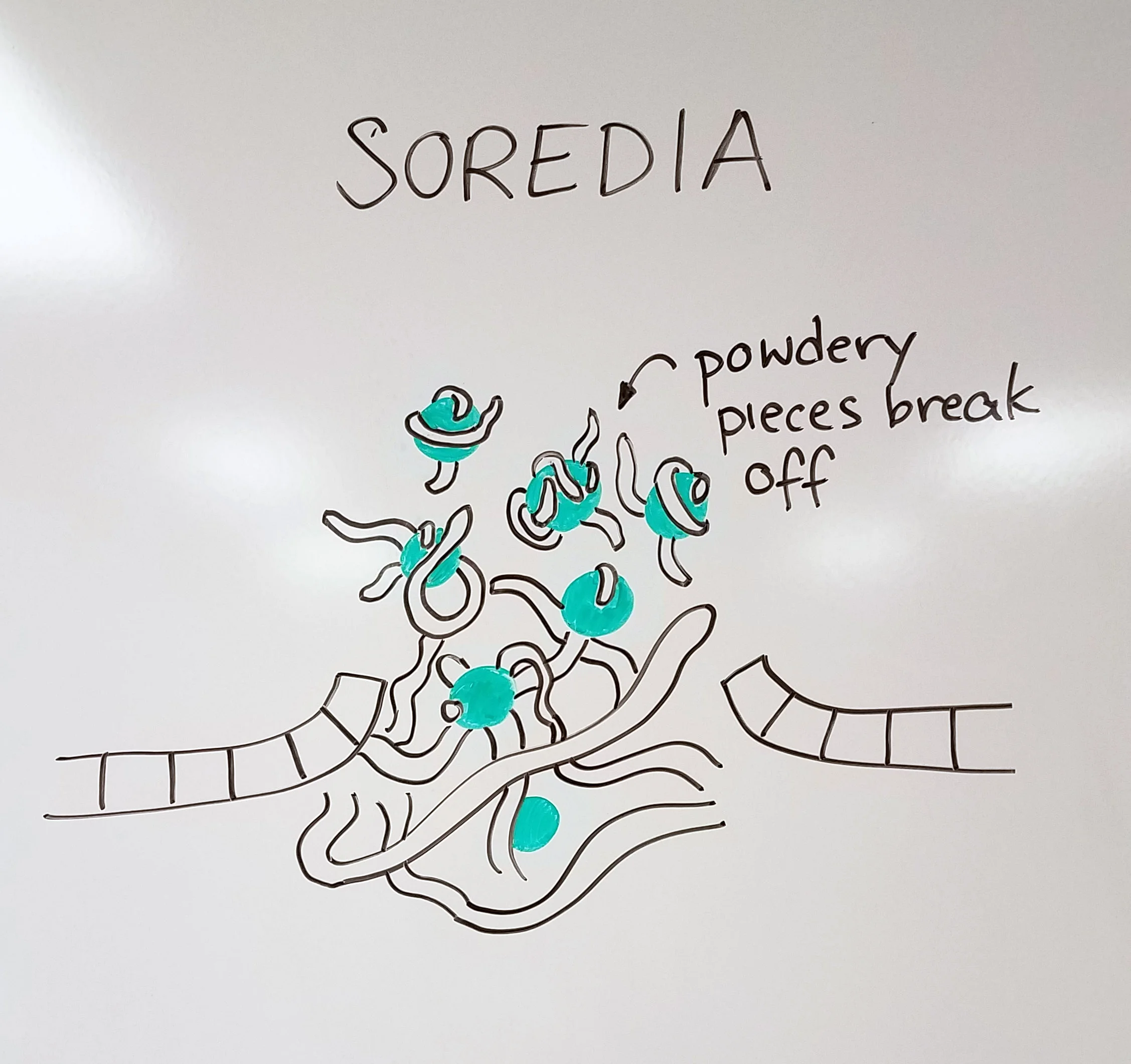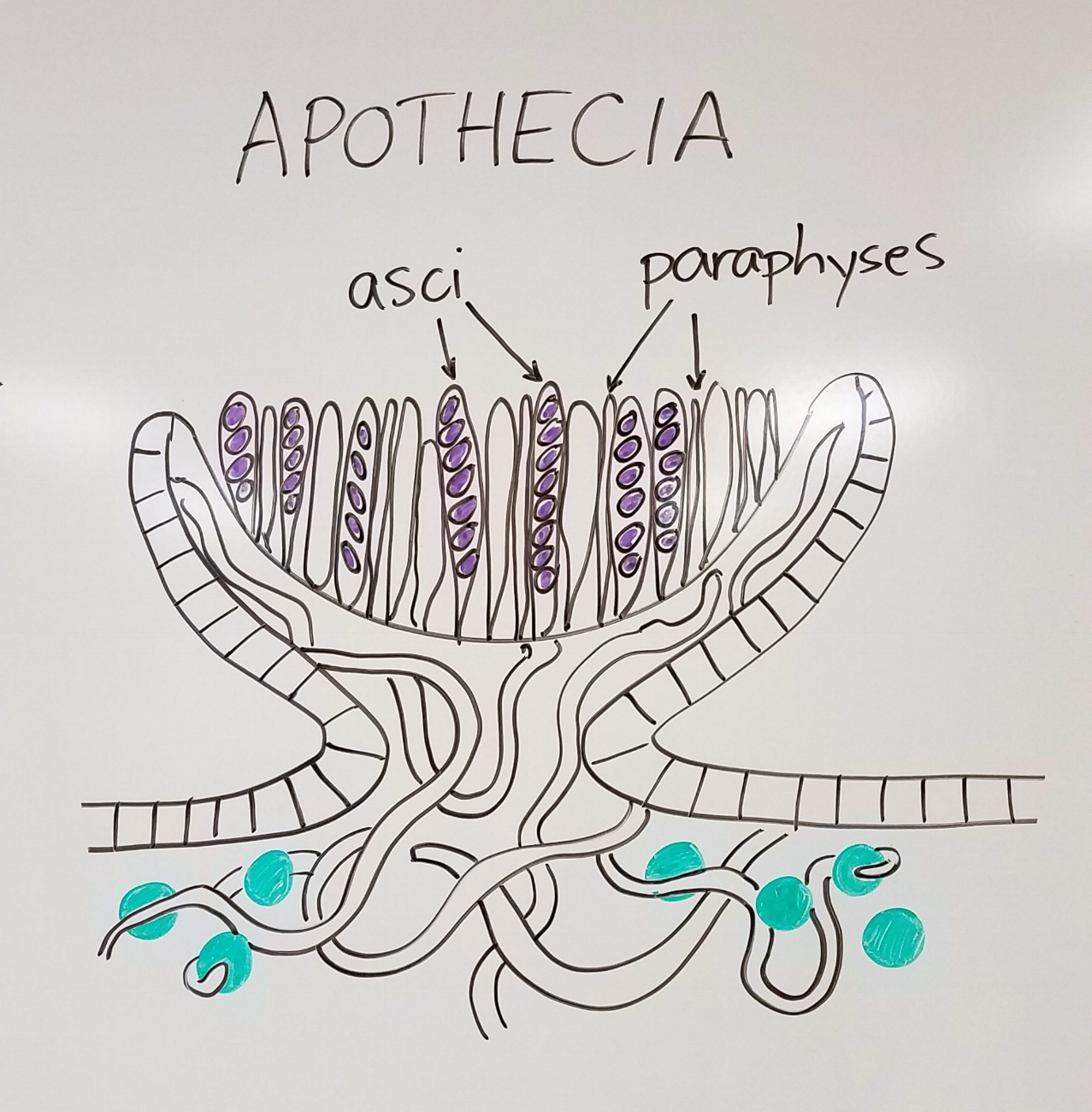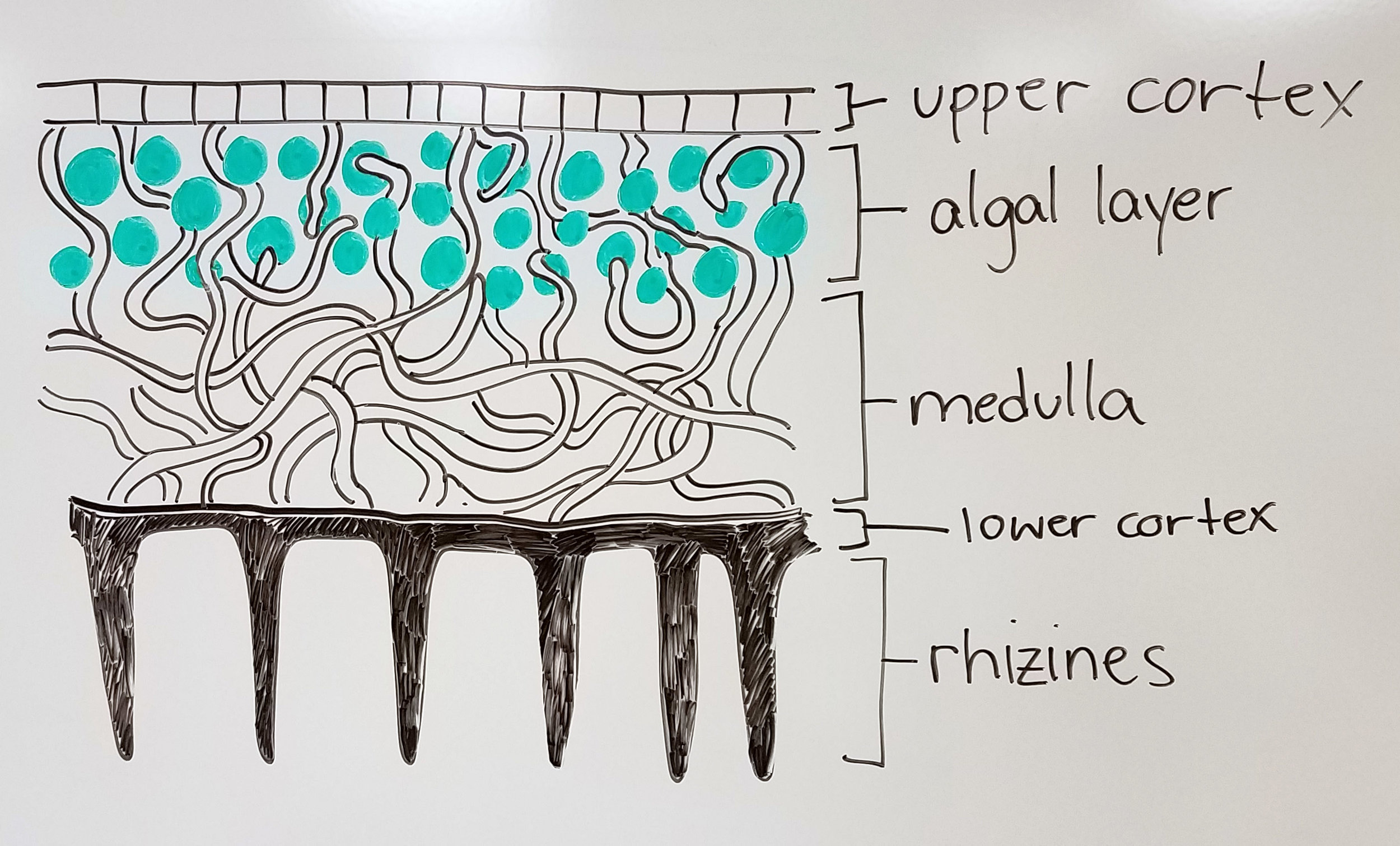Biology 440: Mycology
My white board life cycle of Puccinia graminis (wheat rust), winter 2017.
I was the TA for UW Biology's general mycology for five quarters (taught by Dr. Joe Ammirati).
Pilobolus sp. growing beautifully on horse dung, winter 2017.
Erysiphe sp. (a form of powdery mildew) chasmothecia and asci, winter 2017.
As TA for Biology 440, I taught students about biology, morphology, and ecology of a phylogenetically wide breadth of fungi, including Chytridiomycota, Mucoromycota, Zoopagomycota, Ascomycota, and Basidiomycota. Students also learned compound light microscopy, compound slide preparation, and pure culture technique. My favorite fungus to teach about is Pilobolus (above, on left), and I am especially interested in the morphology of the Mucorales.
I find that mycology is best taught with visual aids wherever possible. Below is a sample of some white board diagrams I have used in teaching students about structure and function in various groups of fungi.



